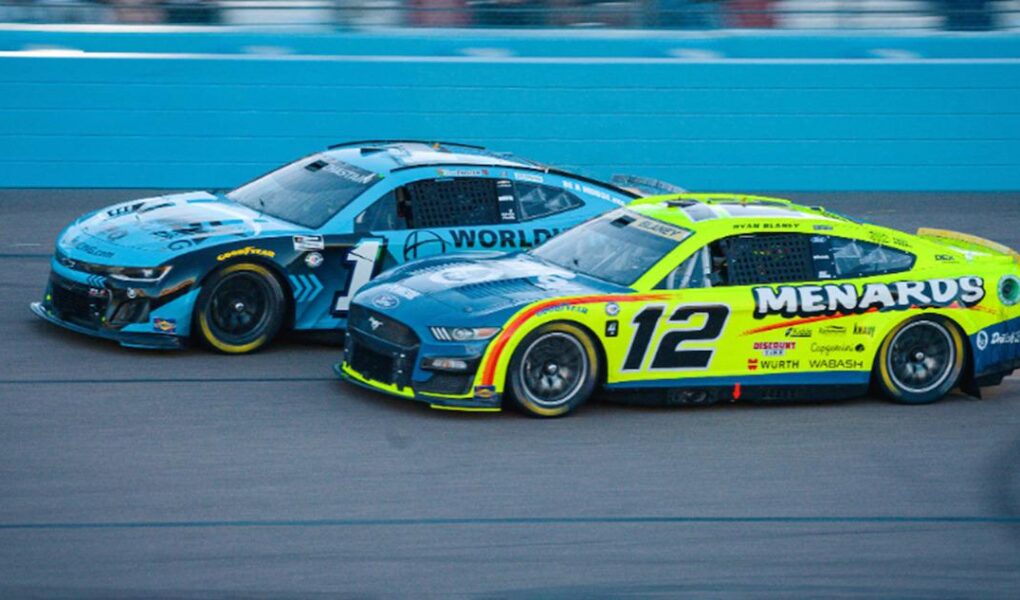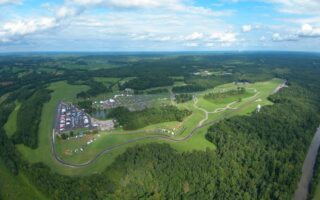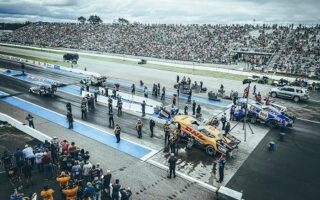Welcome to the roaring heart of American motorsport: the NASCAR raceway, where speed meets skill in a spectacular display of power and precision. These sprawling circuits, crafted from a blend of asphalt and adrenaline, serve as the hallowed ground for some of the world’s most dedicated drivers, engineers, and fans. From the thunderous engines to the vibrant atmosphere of cheering crowds, each race encapsulates a unique blend of strategy, teamwork, and fierce competition. In this article, we’ll dive into the intricate world of NASCAR raceways—exploring their history, the engineering marvels that make them possible, and the cultural significance that they hold within the realm of racing. Buckle up as we embark on a journey through the twists and turns of this legendary sporting phenomenon.
Table of Contents
- Exploring the Evolution of NASCAR Raceways and Their Impact on Motorsports
- Understanding the Engineering Marvels Behind NASCAR Tracks
- Enhancing the Fan Experience at NASCAR Raceways
- Sustainable Practices in the Design and Operation of NASCAR Facilities
- Q&A
- In Retrospect
Exploring the Evolution of NASCAR Raceways and Their Impact on Motorsports
The landscape of NASCAR raceways has dramatically transformed over the years, evolving from simple, circular tracks to complex, multi-dimensional arenas that enhance both the racing experience and fan engagement. The introduction of technology, like variable banking and advanced safety measures, has redefined raceway design, allowing for higher speeds and more thrilling competition. Purists may reminisce about the classic tracks such as the Daytona International Speedway and Talladega Superspeedway, but newer facilities like the Circuit of the Americas have brought a fresh perspective, emphasizing road racing elements and creating a diverse range of racing formats.
These developments have not just impacted the engineering of raceways; they have also influenced the sphere of motorsports culture. With a shift towards more family-friendly environments and entertainment options, modern raceways are reminiscent of amusement parks, providing fans with a full day’s worth of experiences. Highlights include:
- Increased Fan Accessibility: Improved seating and fan zones have made it easier for spectators to engage with the action.
- Enhanced Technology: Live telemetry and augmented reality experiences have enriched the viewing experience.
- Diverse Events: Tracks are being utilized for various motorsport events beyond NASCAR, catering to a broader audience.
| Raceway Name | Location | Opened |
|---|---|---|
| Daytona International Speedway | Daytona Beach, FL | 1959 |
| Talladega Superspeedway | Talladega, AL | 1969 |
| Circuit of the Americas | Austin, TX | 2012 |
Understanding the Engineering Marvels Behind NASCAR Tracks
NASCAR tracks are not merely paved surfaces; they are intricate masterpieces of engineering that blend art and functionality to create the ultimate racing experience. Each track is designed with precision, considering factors such as banking angles, surface material, and drainage systems. The banked turns, which can reach up to 31 degrees in some venues, allow cars to maintain high speeds while navigating corners. Furthermore, the composition of the asphalt is meticulously crafted to optimize tire grip and durability, influencing race outcomes dramatically. This careful consideration is crucial, as it ensures that the vehicles can endure the stress of intense competition, allowing for thrilling performances without jeopardizing safety.
Another vital aspect of NASCAR track engineering is the incorporation of safety features that protect both drivers and spectators. These include advanced guardrails, energy-absorbing barriers, and catch fences designed to mitigate the impacts of high-speed collisions. Tracks are often equipped with sophisticated lighting systems to facilitate night races and enhance visibility for both participants and fans. The layout of each track—from oval circuits to road courses—demands fine-tuning to achieve the right balance between challenge and entertainment. Below is a table showcasing some of the most recognized features of selected NASCAR tracks:
| Track Name | Location | Banking Angle | Track Length |
|---|---|---|---|
| Daytona International Speedway | Daytona Beach, FL | 31° | 2.5 miles |
| Talladega Superspeedway | Talladega, AL | 33° | 2.66 miles |
| Charlotte Motor Speedway | Concord, NC | 24° | 1.5 miles |
| Phoenix Raceway | Phoenix, AZ | 10° | 1 mile |
Enhancing the Fan Experience at NASCAR Raceways
Revamping the fan experience at NASCAR raceways is essential for deepening engagement and creating lasting memories. From interactive exhibits to enhanced viewing options, the focus has shifted toward making every race a captivating adventure. Fans can explore a variety of activities, including:
- Virtual Reality Experiences: Step into the driver’s seat and feel the thrill of racing through immersive simulation.
- Meet-and-Greet Events: Opportunities to connect with drivers and team members, fostering a sense of community.
- Family-Friendly Zones: Designated areas featuring games, food, and entertainment tailored for fans of all ages.
Moreover, enhancements in technology are transforming how fans interact with the races. Mobile apps provide real-time updates, enabling attendees to track their favorite teams and drivers instantly. To optimize comfort and accessibility, raceways are investing in:
- Improved Seating Options: Ergonomically designed seats with better views and greater legroom.
- High-Speed Wi-Fi: Ensuring fans remain connected and can share their race day excitement on social media.
- Food Variety: Expanded concessions with local cuisine and healthier options to satisfy diverse preferences.
Sustainable Practices in the Design and Operation of NASCAR Facilities
NASCAR facilities are evolving, embracing sustainable practices that reflect a commitment to environmental stewardship. By implementing energy-efficient technologies, these venues are reducing their carbon footprints and showcasing innovative solutions in motorsport. Solar panels have become a common sight on roofs, harnessing the sun’s energy to power lighting and electronic systems. Additionally, facilities are optimizing their waste management strategies, incorporating recycling stations and composting organic materials to minimize landfill contributions.
Moreover, the design of new racetracks and the renovation of existing ones prioritizes eco-friendliness. Water conservation systems, such as rainwater harvesting for irrigation, play a crucial role in maintaining the lush landscapes that surround these tracks. To further enhance sustainability, many venues are integrating green landscaping practices that use native plants, requiring less water and providing habitats for local wildlife. The proactive measures taken not only benefit the environment but also cultivate a stronger connection between fans and the natural world.
Q&A
Q&A: All About NASCAR Raceway
Q1: What exactly is a NASCAR Raceway?
A1: A NASCAR Raceway is a specialized track designed for high-speed auto racing, primarily hosting events sanctioned by the National Association for Stock Car Auto Racing (NASCAR). These raceways can vary in shape and size, including iconic oval tracks, road courses, and superspeedways, all tailored to accommodate thrilling racing formats and fan engagement.
Q2: How did NASCAR Raceways originate?
A2: NASCAR was founded in 1948, and with it came the need for designated racing venues. The first official raceway was built to host stock car races that emphasized speed and competition. The sport grew rapidly, leading to the creation of numerous raceways across the United States, each with its unique characteristics and local flavor.
Q3: What makes NASCAR Raceways unique compared to other racing tracks?
A3: NASCAR Raceways are distinct because they are designed specifically for stock car racing, with emphasis on high speeds, tight turns, and intense competition. Furthermore, they often feature grandstands that can hold thousands of fans, providing an electric atmosphere unmatched by most other motorsport venues. The combination of sound, speed, and strategy makes each race a captivating experience.
Q4: How do races at a NASCAR Raceway typically unfold?
A4: Races at NASCAR Raceways are structured in laps around the track, each race varying in length and format. Drivers compete not just for speed, but also for strategy, including pit stops and tire management. The atmosphere is charged, with teams employing real-time data to make decisions while fans cheer on their favorite drivers, creating a thrilling spectacle from start to finish.
Q5: Can you explain the significance of the Daytona International Speedway?
A5: The Daytona International Speedway is perhaps the most iconic NASCAR Raceway, located in Daytona Beach, Florida. Known for its legendary races, including the Daytona 500, it holds a special place in NASCAR history. Its blend of speed, tradition, and prestige makes it a pilgrimage site for motorsport fans worldwide.
Q6: Are there different types of events held at NASCAR Raceways?
A6: Absolutely! Beyond the premier NASCAR Cup Series races, many raceways also host touring series, local competitions, and special events, such as charity races and festivals. They may also feature entertainment events, showcasing that raceways serve as more than just venues for racing, but as community hubs for excitement and engagement.
Q7: What can fans expect when they attend a NASCAR race at a raceway?
A7: Fans attending a NASCAR race can look forward to an exhilarating experience filled with roaring engines, high-speed action, and a festive atmosphere. From pre-race activities and driver meet-and-greets to post-race celebrations, there’s something for everyone. The chance to explore the infield, witness live music performances, and partake in food and merchandise offerings only enhances the experience.
Q8: How can someone get involved in NASCAR or visit a NASCAR Raceway?
A8: Getting involved in NASCAR can start by attending a race at your nearest raceway or through participation in local racing events. Many raceways offer fans the opportunity to drive a stock car for a day or attend driving schools. For those interested in deeper involvement, exploring team memberships, volunteering, or even pursuing a career in motorsport can be exciting paths.
Q9: What are some future developments for NASCAR Raceways?
A9: NASCAR is always evolving, and future developments may include modernizing facilities, enhancing fan experiences, and integrating cutting-edge technology, such as augmented reality and drone coverage. Additionally, there’s a growing emphasis on sustainability, with raceways exploring eco-friendly practices to reduce their carbon footprint while continuing to deliver thrilling races.
Q10: Why should someone consider experiencing a race at a NASCAR Raceway?
A10: Experiencing a race at a NASCAR Raceway is about more than just the speed; it’s witnessing a rich tradition steeped in passion and competition. The camaraderie among fans, the thrill of watching skilled drivers navigate the track, and the vibrant atmosphere make it a unique experience that is both exhilarating and unforgettable. Whether you’re a long-time enthusiast or new to the sport, the excitement of race day is something everyone should experience at least once.
In Retrospect
As the engines roar to life and the sun sets behind the towering grandstands, NASCAR raceways stand as monuments to speed, strategy, and the unyielding spirit of competition. Each lap tells a story, not just of fierce rivalries and exhilarating victories, but of the shared passion between drivers and fans that fuels this storied sport. Whether you’re a lifelong aficionado or a curious newcomer, the thrill of the raceway beckons, inviting you to witness the dazzling spectacle where precision meets adrenaline. As we close this chapter on the world of NASCAR, remember that the excitement doesn’t just happen on race day; it lives in the heart of every enthusiast and the spirit of every vehicle that takes to the track. So, buckle up and prepare for the next lap; the journey through the world of NASCAR is far from over.



